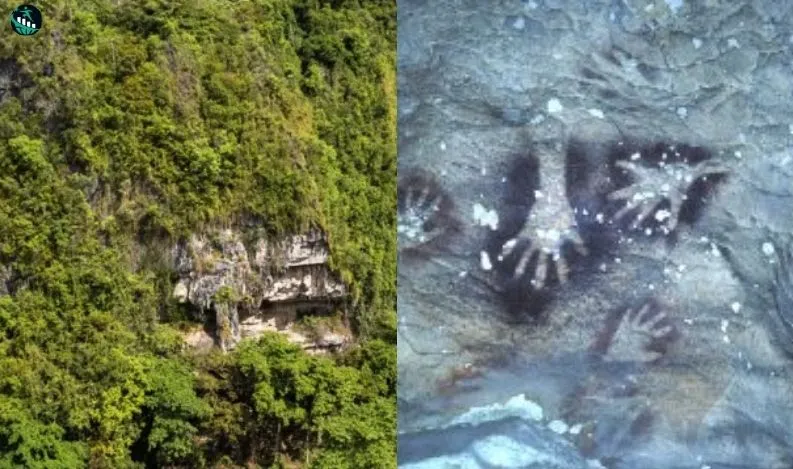
World's Oldest Artwork Unearthed in Indonesian Cave: Redefining Ancient Art History
In a groundbreaking discovery, researchers have uncovered what is believed to be the world’s oldest known artwork in a cave on the Indonesian island of Sulawesi. This remarkable painting, estimated to be 51,200 years old, features a scene with three people surrounding a large red pig, challenging the long-standing belief that Europe was the cradle of early cave art.
Ancient Cave Painting in Sulawesi
The ancient painting, located in the Leang Karampuang cave in the Maros-Pangkep region of South Sulawesi, is a significant archaeological find. Measuring 92 cm by 38 cm (36 inches by 15 inches), the artwork is created using a single shade of dark red pigment. The central image of a wild pig is accompanied by three human figures, suggesting a complex narrative scene.
Significance of the Discovery:
Maxime Aubert, an archaeologist at Griffith University in Australia and co-author of the study published in Nature, describes the painting as the oldest evidence of storytelling. Aubert was also involved in identifying the previous record-holder, a depiction of a warty pig in the same region, dated to be at least 45,500 years old.
Artistic and Historical Insights:
The deliberate composition and interaction between the figures indicate an intentional storytelling effort, according to Adam Brumm, another Griffith University archaeologist and study co-author. While the exact narrative remains unknown, the painting provides valuable insights into the cognitive abilities and cultural expressions of early humans.
Advanced Dating Techniques
Researchers used a novel scientific method to date the painting accurately. By utilizing a laser to analyze calcium carbonate crystals that formed over the artwork, they determined its minimum age. This method yielded a date significantly older than any previously known cave art.
Expert Opinions:
Chris Stringer, an anthropologist at London’s Natural History Museum, finds the dating results "quite provocative" due to their antiquity. Although not directly involved in the research, Stringer acknowledges the findings' credibility but stresses the need for further verification through additional dating.
Implications for Human History
This discovery suggests that representational art and storytelling might have originated earlier than previously thought. Aubert speculates that the creators of the Sulawesi paintings were likely the first humans who migrated through Southeast Asia before reaching Australia around 65,000 years ago.
Impact on Understanding Human Migration:
The finding implies that artistic expression was already part of human culture during these early migrations. Brumm emphasizes that the advanced nature of the Sulawesi rock art challenges the assumption that Europe was the birthplace of cave art and highlights the sophisticated mental capacities of early human societies.
Future Research Directions:
As scientists continue to explore and apply advanced dating techniques, it is anticipated that even older samples of cave art will be discovered, further expanding our understanding of human history and cultural development.
Conclusion
The discovery of the world’s oldest artwork in an Indonesian cave not only shifts the focus from Europe to Southeast Asia but also underscores the deep-rooted history of storytelling and artistic expression in human evolution. This remarkable find opens new avenues for research and enriches our understanding of early human culture.
Also Read:-



Recent Comments: